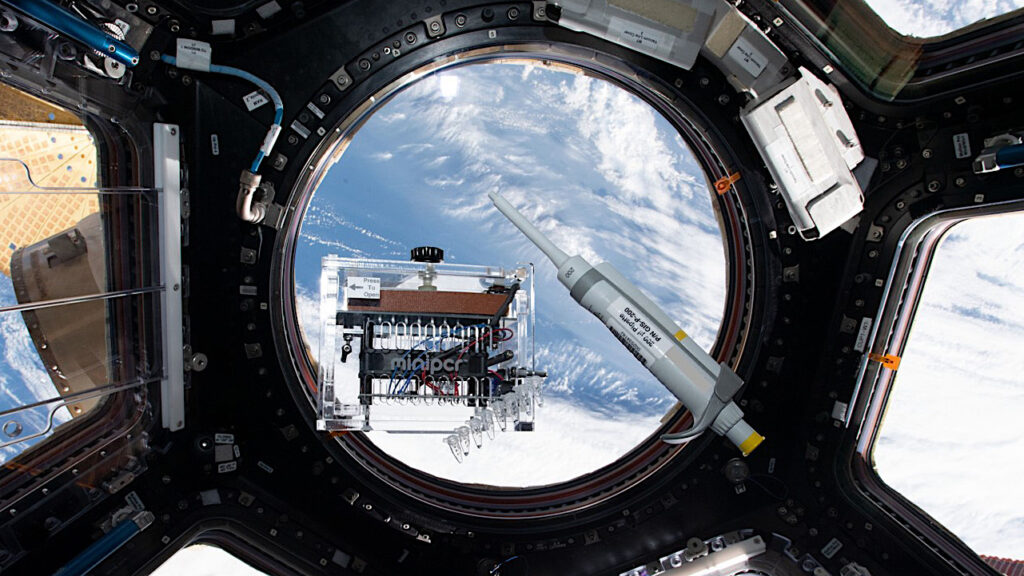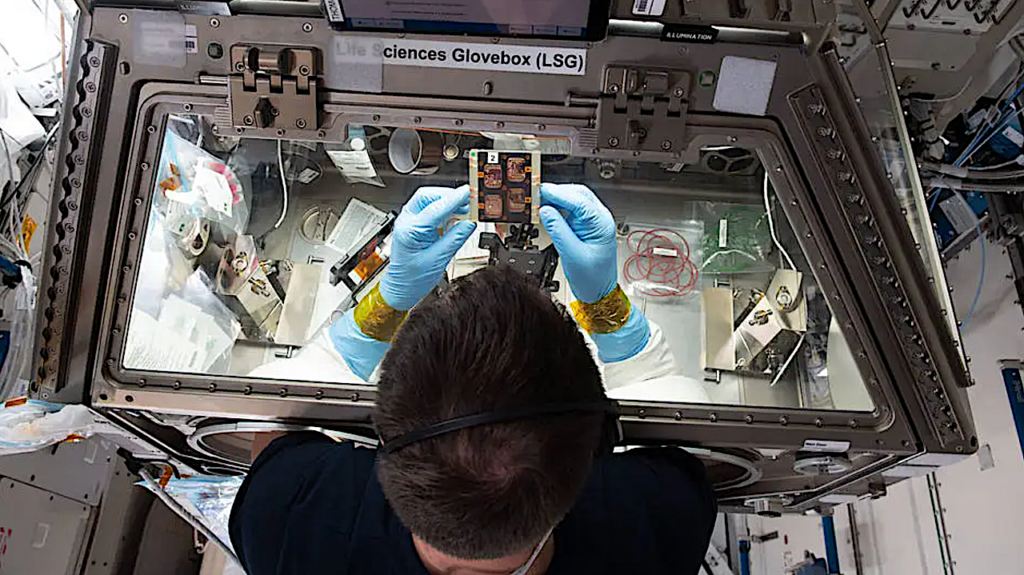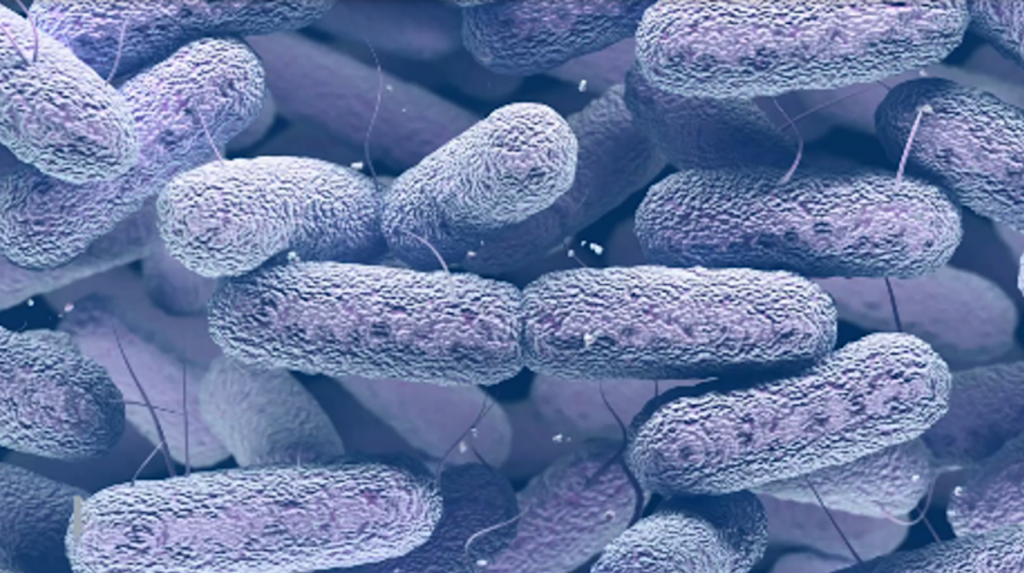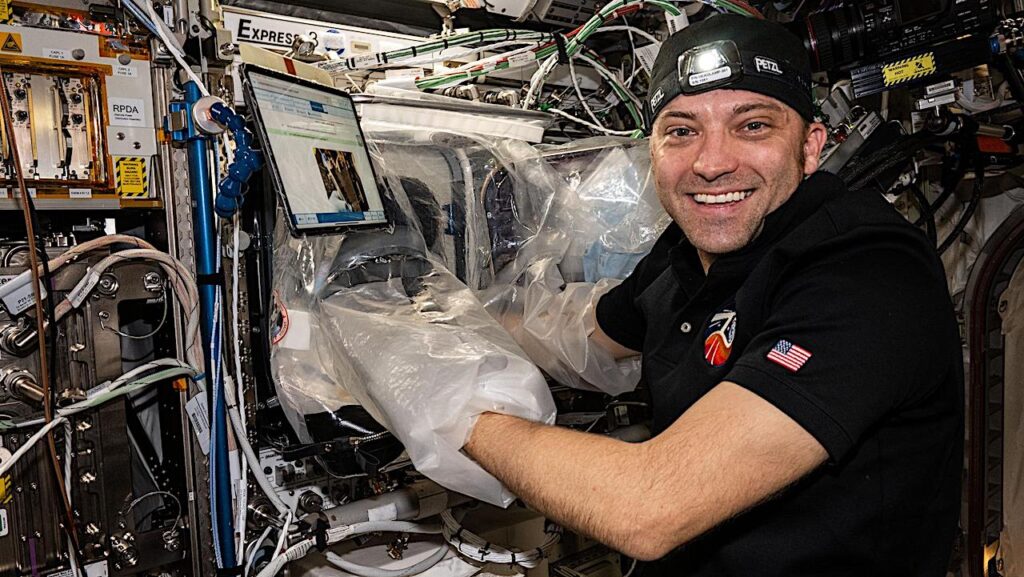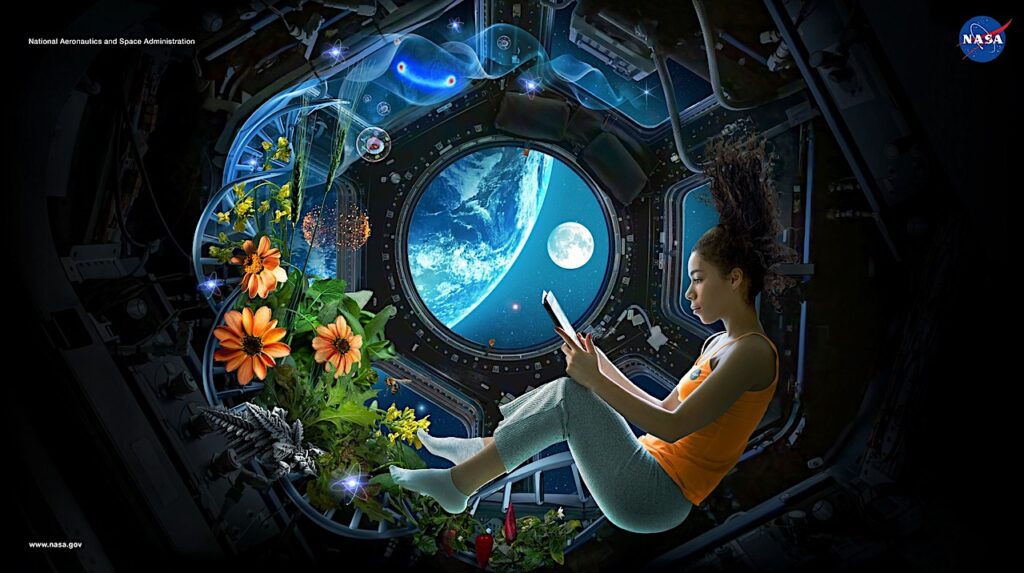NASA Spaceline Current Awareness List #1,099 10 May 2024 (Space Life Science Research Results)
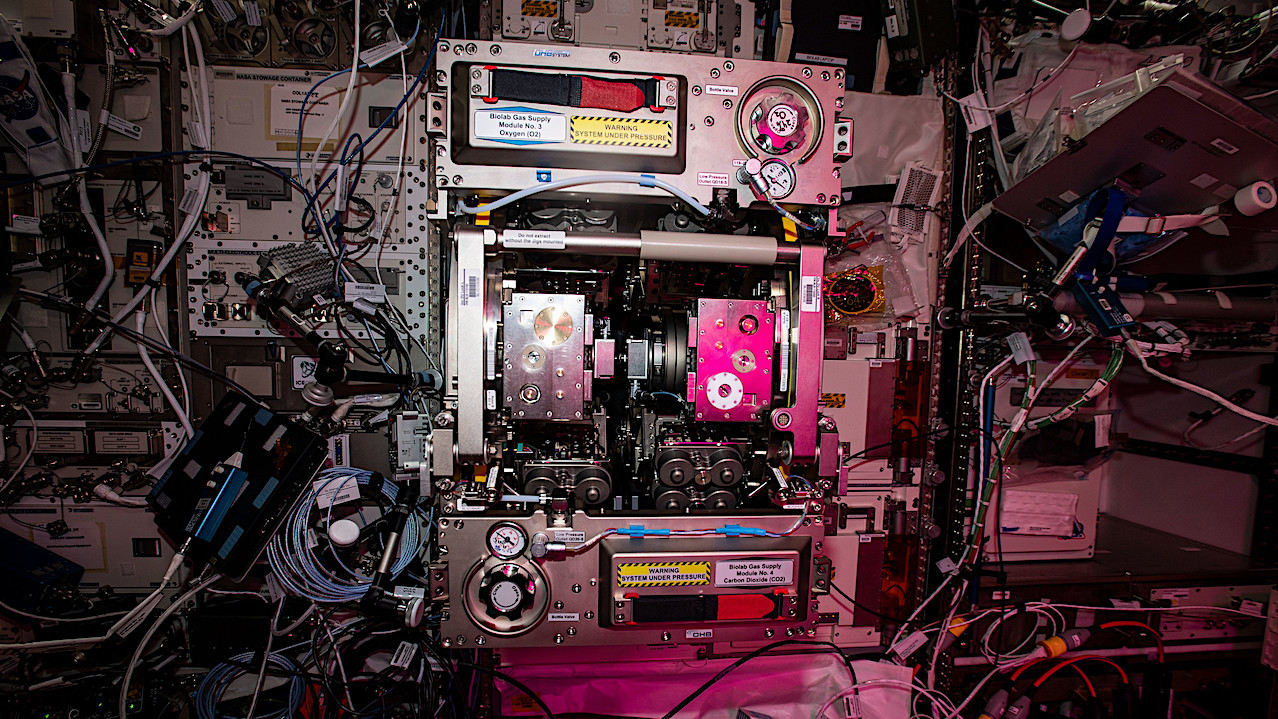
Biolab Larger image — ESA/NASA
The abstract in PubMed or at the publisher’s site is linked when available and will open in a new window.
Papers deriving from NASA support:
- Gibson CR, Mader TH, Lipsky W, Schallhorn SC, Tarver WJ, Suresh R, Hague TN, Brunstetter TJ.Photorefractive keratectomy and laser-assisted in situ keratomileusis on 6-month space missions.Aerosp Med Hum Perform. 2024 May;95(5):278-81.Note: ISS results.
Journal Impact Factor: 0.889
Funding: T.J. Brunstetter is affiliated with NASA Johnson Space Center. - Lee S, Vander Roest AS, Blair CA, Kao K, Bremner SB, Childers MC, Pathak D, Heinrich P, Lee D, Chirikian O, Mohran SE, Roberts B, Smith JE, Jahng JW, Paik DT, Wu JC, Gunawardane RN, Ruppel KM, Mack DL, Pruitt BL, Regnier M, Wu SM, Spudich JA, Bernstein D.Incomplete-penetrant hypertrophic cardiomyopathy MYH7 G256E mutation causes hypercontractility and elevated mitochondrial respiration.Proc Natl Acad Sci USA. 2024 May 7;121(19):e2318413121.PI: J.W. JahngJournal Impact Factor: 11.1
Funding: “…Translational Research Institute for Space Health (TRISH) through Cooperative Agreement NNX16AO69A (to J.W.S.J.)…”
Other papers of interest:
- Hoson T, Soga K, Wakabayashi K, Hedrich R, Suzuki M, Muranaka T, Hashimoto T, Hashimoto H, Yano S, Matsumoto S, Kasahara H, Kamada M, Shimazu T.Suppression of bolting in the Arabidopsis hmg1 mutant under microgravity conditions in space – Possible involvement of lipid rafts.Biol Sci Space. 2024 May 9;38:18-26.Note: From the introduction: “In the present study, we investigated the growth and development of the Arabidopsis hmg1 mutant, which was cultivated under either artificial 1 g or microgravity conditions on the Kibo Module of the International Space Station (the Resist Tubule space experiment).” This article is may be obtained online without charge.
- Babocs D, Preda A, Christiansen R.Cis-lunar and surface missions: Health risks and potential surgical conditions.J Space Saf Eng. 2024 Apr 22. Online ahead of print.Note: From the abstract: “The next goal of human space exploration is to return to the Moon to stay, and to establish a new, more advanced space station in lunar orbit: the ‘Lunar Gateway’. The authors aim to contribute to this goal through undertaking an ongoing comprehensive survey of relevant published scientific literature to seek information regarding the risk of medical conditions that might require operative or non-operative surgical solutions during long-duration spaceflight.” This article may be obtained online without charge.
- Waisberg E, Ong J, Masalkhi M, Lee AG.Near infrared/ red light therapy a potential countermeasure for mitochondrial dysfunction in spaceflight associated neuro-ocular syndrome (SANS).Eye (Lond). 2024 May 3.Note: This article is a comment and may be obtained online without charge.
- Subramanian A, Ip CHL, Qin W, Liu X, Carter SWD, Oguz G, Ramasamy A, Illanes SE, Biswas A, Perron GG, Fee EL, Li SWL, Seah MKY, Choolani MA, Kemp MW.Simulated lunar microgravity transiently arrests growth and induces osteocyte-chondrocyte lineage differentiation in human Wharton’s jelly stem cells.npj Microgravity. 2024 May 4;10:51.Note: A random positioning machine was used in this study. This article may be obtained online without charge.
- Badalì C, Wollseiffen P, Schneider S.Shades of gravity – Effects of planetary gravity levels on electrocortical activity and neurocognitive performance.Brain Struct Funct. 2024 May 3.Note: From the abstract: “This study investigates the influence of partial gravity on behavioral (error rate and reaction time) and neuronal parameters (event-related potentials) through parabolic flights.”
- Berger L, Burles F, Jaswal T, Williams R, Iaria G.Modern magnetic resonance imaging modalities to advance neuroimaging in astronauts.Aerosp Med Hum Perform. 2024 May;95(5):245-53.
- Radstake WE, Parisi A, Miranda S, Gautam K, Vermeesen R, Rehnberg E, Tabury K, Coppes R, van Goethem MJ, Brandenburg S, Weber U, Fournier C, Durante M, Baselet B, Baatout S.Radiation-induced DNA double-strand breaks in cortisol exposed fibroblasts as quantified with the novel foci-integrated damage complexity score (FIDCS).Sci Rep. 2024 May 6;14:10400.Note: From the abstract: “Without the protective shielding of Earth’s atmosphere, astronauts face higher doses of ionizing radiation in space, causing serious health concerns. Highly charged and high energy (HZE) particles are particularly effective in causing complex and difficult-to-repair DNA double-strand breaks compared to low linear energy transfer. Additionally, chronic cortisol exposure during spaceflight raises further concerns, although its specific impact on DNA damage and repair remains unknown. This study explorers the effect of different radiation qualities (photons, protons, carbon, and iron ions) on the DNA damage and repair of cortisol-conditioned primary human dermal fibroblasts.” This article may be obtained online without charge.
- Gonçalves R, Wamelink GWW, van der Putten P, Evers JB.Intercropping on Mars: A promising system to optimize fresh food production in future Martian colonies.PLoS One. 2024 May 1;19(5):e0302149.Note: This article may be obtained online without charge.
- Hosamani R, Swamy BK, Sathasivam M, Dsouza A, Ashiq I M.Cocopeat supplementation negates lunar soil simulant-induced baneful phenotypic and biochemical changes in crop seedlings.Acta Astronaut. 2024 May 8. Online ahead of print.Note: From the abstract: “Lunar exploration has captivated significant attention in recent times through programs such as Artemis. To establish long-term sustenance on the Moon, astronauts have to grow their food on-site. While a key substrate for plant production – lunar regolith can induce baneful effects, supplementation with organic amendments could alleviate this inherent toxicity and significantly improve plant growth. In the present study, we examined the suitability of cocopeat (CP) as an amendment to ISRO’s lunar soil simulant (LSS), LSS-ISAC-1.”
- Minetti AE, Luciano F, Natalucci V, Pavei G.Horizontal running inside circular walls of Moon settlements: A comprehensive countermeasure for low-gravity deconditioning?R Soc Open Sci. 2024 May 1;11(5):231906.Note: From the introduction: “Here, we propose a novel solution: lunar inhabitants could engage in running on the inside of vertical circular walls, hence running parallel to the Moon surface. Such an activity on Earth is reserved for motorized vehicles during stunt exhibitions (called ‘Wall of Death’ (WoD)) but could be done by humans on the Moon and would generate enough centrifugal acceleration to emulate a higher level of gravity. This would provide an exercise-based countermeasure that simultaneously stimulates cardiorespiratory fitness, the musculoskeletal system and motor control. This article provides a theoretical framework for horizontal circular locomotion tests its prediction in a terrestrial Moon gravity emulator and estimates its physiological demands.” This article may be obtained online without charge.
- Huiban N, Gehant M, Brocq F-X, Collange F, Mayet A, Monteil M.Global cardiovascular risk and associated factors in 2,792 French military and civilian aircrew.Aerosp Med Hum Perform. 2024 May;95(5):233-44.Note: This article may be obtained online without charge.
- Carpenter AD, Li Y, Wise SY, Fatanmi OO, Petrus SA, Fam CM, Carlson SJ, Cox GN, Cheema AK, Singh VK.Pharmacokinetic and metabolomic Sstudies with a promising radiation countermeasure, BBT-059 (PEGylated interleukin-11), in rhesus nonhuman primates.Radiat Res. 2024 May 8. Online ahead of print.
- Seino R, Fukunaga H.Evaluation of cell cycle-dependent migration activity after x-ray exposure: A radiobiological approach for optimization of radiotherapy with cell cycle-targeting agents.Radiat Res. 2024 May 9. Online ahead of print.
- Devine JK, Choynowski J, Hursh SR.Fatigue risk management preferences for consumer sleep technologies and data sharing in aviation.Aerosp Med Hum Perform. 2024 May;95(5):265-72.
- van Loon JJWA, Lobascio C, Boscheri G, Goujon C, Voglino S, Zeminiani E, González-Cinca R, Ewald R.Benefits of a rotating–partial gravity–spacecraft.Acta Astronaut. 2024 May 6. Online ahead of print.Note: From the abstract: “In this paper we address very briefly the medical issues, but the work is mainly focused on the advantages regarding engineering, operations, life support, safety and budget of having a constantly rotating spacecraft first in Low Earth Orbit and later for long duration missions to Mars. A large rotating spacecraft is feasible and affordable to build, operate and maintain. It has advantages for governmental and commercial use but also in light of the expected increase in space tourism. It will also save crew time and billions of dollars now being spent to counteract the effects of microgravity.”
- Golov AK, Gavrilov AA.Cohesin-dependent loop extrusion: Molecular mechanics and role in cell physiology.Biochemistry (Moscow). 2024 May 6;89(4):601-25.
#astrobiology, space biology, space life science,



